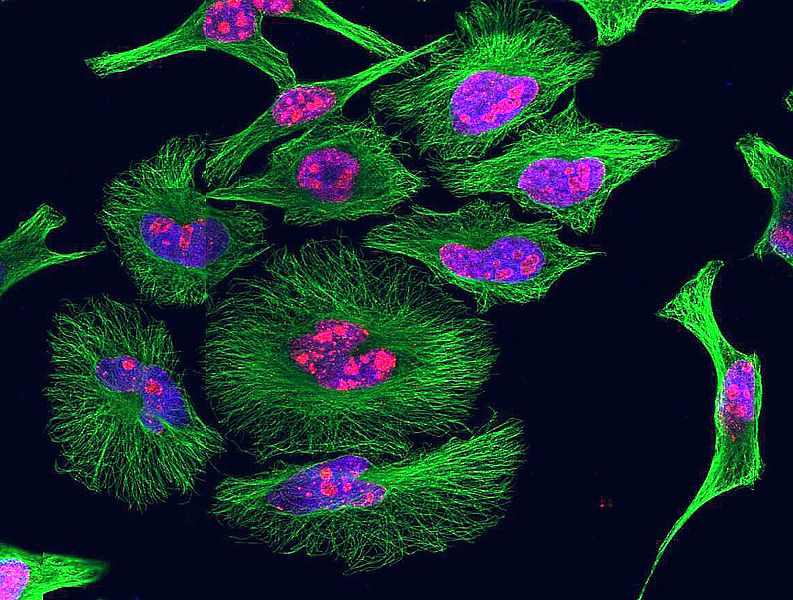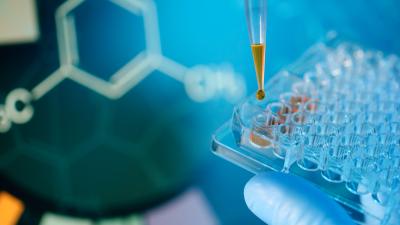Organ Procurement Organizations: Partners for Human Tissue Research
Human tissues are invaluable resources for medical research, diagnostic tests, biomarker discovery, drug development, product testing, chemical toxicity, and much more.
Fresh tissue samples are, for many applications, the preferred model environment to conduct in-depth analyses of human biological processes. Since human tissues often provide the best way of understanding how the human body works and reacts to therapies, they can help reduce the use of animals in research. However, researchers may not know how or where to obtain human tissues to meet their research needs.
The use of human tissues in biomedical research has been critical to the advancement of medical care. Research on tissues may provide information that will help prevent, diagnose, and treat diseases. For example, human tissue can help determine how people will respond differently to various drugs, helping researchers better observe potential benefits or adverse effects. Research using human tissues eliminates translatability and reproducibility issues that are a common occurrence when conducting research using animals.
Advances in experimental techniques to allow for greater use of human tissue have allowed an expanded understanding of human biology, resulting in new approaches to the treatment of a wide variety of diseases and health conditions. Recently, researchers developed a new technology to preserve the life of procured corneas for transplantation, significantly increasing the number of corneas that are viable for transplantation, ultimately improving the vision of countless people.
As interest grows in using more human tissues for numerous applications, an uninterrupted line of communication between tissue providers and researchers is needed to ensure a continuous supply of a variety of human tissues. Many scientists experience difficulty in obtaining high quality, well characterized human tissues to support their research needs. Fortunately, there are many organizations, including Organ Procurement Organizations (OPOs), human tissue and organ providers, and biobanking facilities, that strive to connect scientific researchers with available human tissue. Supporting these types of organizations and raising awareness in the scientific and regulatory communities are key ways in which the barriers to greater uptake of human tissue in research can be overcome.
OPOs are responsible for procuring donor organs and tissues and either placing the organs for transplant or, should they not be ideal for transplant, distributing them to be processed for research applications. OPOs also conduct research and educate scientists and the public. Biobanks store and manage human biological samples and provide researchers access to an extensive number of human tissues to support a wide range of research projects.
Therefore a researcher can obtain tissues through two main avenues. The first method is to work directly with tissue providers like OPOs, where, as they become available, tissues are collected and prepared specifically to meet an investigator’s requests. Alternatively, investigators can source tissues from biobanks, where tissues are stored for research use and typically have multiple types of tissues that are immediately available.
Scientists are encouraged to explore the resources below to determine which method better suites their research needs.
Tissue Providers
Donor Network West
Donor Network West provides nontransplantable organs and tissues to save and heal future lives through the advancement of medical research. Donor Network West partners with researchers in academic medical centers, hospitals, universities, and biotechnology centers to analyze samples, conduct clinical trials, work in industry laboratories to improve the outcomes of transplanted organs, and improve medicine for the general public.
International Institute for the Advancement of Medicine
The International Institute for the Advancement of Medicine (IIAM) provides non-transplantable human organs and tissues for medical research, education, and development. IIAM works with organ procurement organizations, tissue banks, and donor families in the U.S. to provide tissues and organs to medical and scientific professionals around the world.
LifeNet Health
LifeNet Health provides the gift of human organs that are not suitable for transplant, tissues, and cells to advance biomedical and pharmacological sciences. LifeNet Health recovers organs and tissues from normal and diseased donors to serve the unmet needs of academic and research institutes, and pharmaceutical, reagent, and biotech companies.
National Disease Research Interchange
The National Disease Research Interchange (NDRI) is a not-for-profit organization that serves as a human tissue and organ for research resource. It provides human tissues to scientists in academic, corporate, and independent research organizations throughout the world.
Biobanks
Biobank Resource Centre
The Biobank Resource Centre developed and maintained by the University of British Columbia Office of Biobank Education and Research and the Canadian Tissue Repository Network lists registered biobanks that can be sorted by country.
College of American Pathologists Accredited Laboratory and Biorepository Directory
The College of American Pathologists offers a searchable database to identify accredited laboratories and biorepositories.
US Biolab
The US Biolab is a global biobank that has access to a diverse range of human biospecimens in various disease states to meet researcher's research needs. US Biolab collaborates with clinical and research centers in the United States, Europe, and Asia on developing collection protocols that are approved by local IRBs and ethic committees and that comply with international and local regulations and guidelines.








